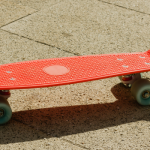Skateboard decks, the flat board where riders stand on a skateboard, are often seen as an expensive investment.
At first glance, they might seem like simple pieces of wood, but there’s more to them than meets the eye. The cost of a skateboard deck can be attributed to several factors, including the materials used, the craftsmanship involved, brand reputation, and the design aesthetics.
In this article, we’ll delve into these aspects to shed light on why skateboard decks come with a hefty price tag.
We’ll explore the meticulous process of creating a skateboard deck, the high-quality materials that go into their production, and the impact of brands and designs on their ultimate cost.
Why are decks so expensive?
Skateboard decks are often perceived as expensive due to several factors that contribute to their overall cost. Here are four key reasons explaining why skateboard decks tend to be relatively pricey:
High-Quality Materials:
One of the primary reasons for the expense of skateboard decks is the use of high-quality materials in their construction.
Most decks are made from layers of maple wood, which is known for its durability and flexibility.
The maple wood undergoes a specific manufacturing process involving pressing and bonding multiple layers together to create a strong and resilient deck.
The cost of obtaining top-quality maple wood and the precision involved in the manufacturing process contribute significantly to the overall expense.
Manufacturing Techniques:
The manufacturing of skateboard decks involves several intricate processes, including pressing, cutting, shaping, and finishing.
Skateboard decks are typically pressed into a concave shape to provide stability and maneuverability for skaters.
This pressing process requires specialized machinery and skilled labor to ensure consistency and quality.
Also, the cutting and finishing stages demand precision and attention to detail. The combination of these manufacturing techniques adds to the production costs and, consequently, the retail price of the decks.
Artistic Graphics and Customization:
Many skateboard decks feature intricate and artistic graphics, contributing to their aesthetic appeal.
Graphic design, whether it involves collaborating with renowned artists or creating unique and eye-catching visuals, adds to the cost of manufacturing.
Customization options, such as limited edition releases or artist-designed decks, often come with a higher price tag due to the exclusivity and uniqueness they offer.
The cost of licensing artwork, employing graphic designers, and utilizing specialized printing processes all contribute to the overall expense.
How do I know if my skateboard deck is good quality?
Determining the quality of a skateboard deck is crucial for ensuring optimal performance, durability, and safety. Here are five factors to consider when assessing the quality of a skateboard deck:
Material:
The material of the skateboard deck is a fundamental factor in determining its quality.
High-quality skateboard decks are typically made from maple wood, known for its strength, flexibility, and durability. Look for decks that are constructed from multiple layers of maple.
The most common configuration is seven plies, but some brands may offer variations. Cheap or low-quality decks might use inferior wood or fewer layers, compromising overall performance and longevity.
Concave Shape:
The concave shape of a skateboard deck refers to the curvature from side to side.
A good-quality deck has a well-defined concave that suits your skating style. There are various concave shapes, including medium, steep, mellow, and others.
The right concave for you depends on personal preference, whether you prefer a more responsive feel for tricks or a more stable platform for cruising.
Inspect the deck’s profile and feel its concave to ensure it aligns with your skating preferences.
Construction Quality:
Examine the overall construction quality of the deck. Look for even and smooth layers, without visible gaps or bubbles between them.
A high-quality deck is well-constructed with tight bonding between the layers. Inspect the edges for uniformity and smoothness.
A properly constructed deck is less likely to delaminate (layers separating) or develop structural issues over time.
Brand Reputation:
The reputation of the skateboard deck’s brand is often a reliable indicator of quality.
Established and reputable brands have a history of producing decks that meet the standards of professional and amateur skateboarders alike.
Research reviews, ask for recommendations, and consider the brand’s history in the skateboarding community.
Brands with a strong reputation are more likely to prioritize quality materials and craftsmanship.
Performance Features:
Consider any additional features or technologies that contribute to the deck’s performance.
Some decks incorporate innovations such as carbon fiber reinforcement, fiberglass layers, or specific manufacturing processes that enhance strength and pop.
While these features can contribute to a higher price, they may also enhance the deck’s durability and overall performance.
Evaluate whether these features align with your skating style and preferences.
Conclusion
In conclusion, the cost of skateboard decks can be attributed to several factors, including high-quality materials, intricate manufacturing techniques, artistic graphics and customization options.
When assessing the quality of a skateboard deck, consider the material, concave shape, construction quality, brand reputation, and performance features.
Investing in a good-quality deck not only ensures better performance but also promotes safety and longevity. So, choose wisely and enjoy your skating experience to the fullest.
![Why do skateboarders hate scooters? [Reasons + Tips] Why do skateboarders hate scooters? [Reasons + Tips]](https://bedoper.site/wp-content/uploads/2023/04/Why-do-skateboarders-hate-scooters-150x150.png)


![How fast do skateboards go downhill? [90 mph (145 km/h)] How fast do skateboards go downhill? [90 mph (145 km/h)]](https://bedoper.site/wp-content/uploads/2023/04/How-fast-do-skateboards-go-downhill-150x150.png)
